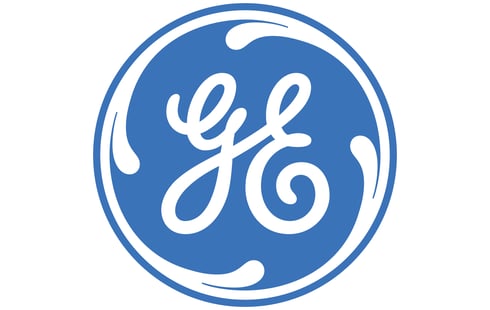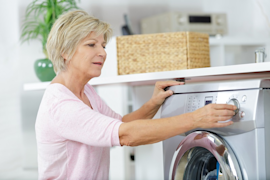GE top-load washer error codes

These error code explanations can help you diagnose a problem with your GE top-load washer. For repair how-to help, visit the PartsDirect repair help section, which includes repair help for washing machines, other major appliances, lawn and garden equipment, garage door openers, vacuum cleaners and more. Search for your model number to find a complete list of replacement parts for your washer
This error code chart covers GE top-load washers with an inverter control mounted on top of the drive motor. The inverter control manages the speed and direction of the drive motor. The inverter control has a diagnostic LED just under the top metal cover on the right side of the inverter control. Remove the front cabinet panel of the washer to view the inverter control and diagnostic LED. Don't touch live electro-mechanical components inside the washer cabinet when running the washer with the front panel removed.
When the drive motor is operating normally and running, the inverter control LED blinks at a constant rate of 1/2 second on and 1/2 second off. When the drive motor is operating normally, and idle, the LED blinks at a constant rate of 1 second on and 1 second off. The drive motor doesn't run and an error code is signaled when a component problem is detected. Error codes are signaled by a number of LED flashes followed by a pause. The error code repeats continuously until reset.
The component problem must be resolved and the inverter control reset before the motor can run. To reset the inverter control after the component problem is resolved, unplug the washer from the wall outlet until you hear a click when the inverter control capacitor discharges (about 15 seconds). Plug the washer back into the outlet and then open and close the washer lid 5 times in a 12-second period within the first 30 seconds of powerup.
Motor failure
Unplug the washer and replace the drive motor.
Slipping drive belt or loose hub nut on the spin basket
Unplug the washer and replace the drive belt if loose or damaged. If the drive belt is okay, tighten the hub nut on the spin basket. Replace the drive motor if the drive belt and hub nut are okay.
Defective inverter control
Replace the drive motor; the inverter control is part of the drive motor and isn't sold separately.
Mode shifter circuit failed
The mode shifter is a component on the drive shaft assembly. Reconnect the wire harness between the inverter control and the mode shifter if loose or disconnected. Replace the drive shaft assembly if the mode shifter is defective; the mode shifter is part of the drive shaft assembly and isn't sold separately
Motor failure
Unplug the washer and replace the drive motor.
Locked rotor on the drive motor
Replace any drive system components that prevent the drive motor from rotating. If drive systems components are okay, replace the drive motor.
Lid didn't open for 4 consecutive cycles
The inverter control expects to see the lid switch open after every cycle. When 4 cycles are completed without the lid switch opening, the inverter control assumes that the lid switch is defective. Unplug the washer and repair or replace the lid switch wire harness. If the wire harness is okay, replace the lid switch.
Motor overheated
Reduce the load of laundry if the washer is overloaded. Replace any drive system components that prevent the drive motor from rotating freely. If drive systems components are okay, replace the drive motor.
Motor brake mechanism is defective
Unplug the washer and replace the drive motor.
Most common symptoms to help you fix your washers
Choose a symptom to see related washer repairs.
Main causes: clogged drain hose, house drain clogged, bad drain pump, water-level pressure switch failure, bad control b…
Main causes: worn agitator dogs, bad clutch, broken motor coupler, shifter assembly failure, broken door lock, suspensio…
Main causes: bad lid switch or door lock, bad timer or electronic control board, wiring failure, bad water inlet valve a…
Main causes: broken lid switch or lid lock, bad pressure switch, broken shifter assembly, faulty control system…
Main causes: unbalanced load, loose spanner nut, worn drive block, broken shock absorber or suspension spring, debris in…
Main causes: no water supply, bad water valves, water-level pressure switch failure, control system failure, bad door lo…
Main causes: lack of electrical power, wiring failure, bad power cord, electronic control board failure, bad user interf…
Main causes: leaky water inlet valve, faulty water-level pressure switch, bad electronic control board…
Main causes: water heater failure, bad water temperature switch, faulty control board, bad water valve, faulty water tem…
Most common repair guides to help fix your washers
Effective articles & videos to help repair your washers
Use the advice and tips in these articles and videos to get the most out of your washer.

Find tips for using your washing machine efficiently to save energy and help reduce utility bills.…

Learn about all the convenient features on our Sears PartsDirect website that make your parts purchases easier.…

Get answers to frequently asked questions about Sears and Sears PartsDirect.…